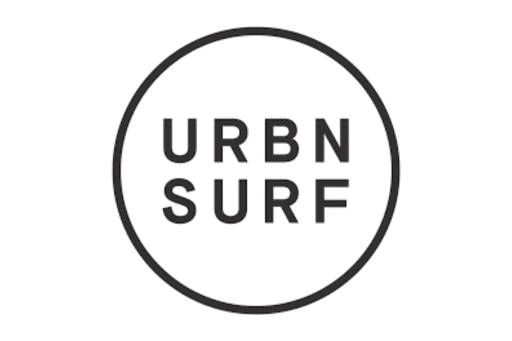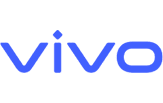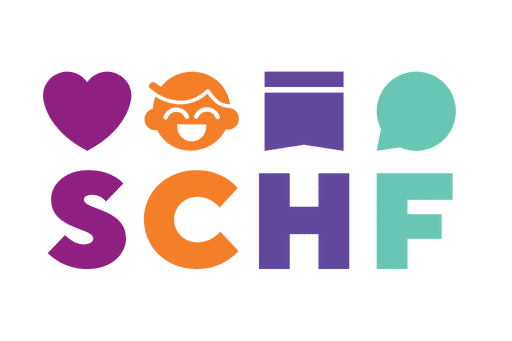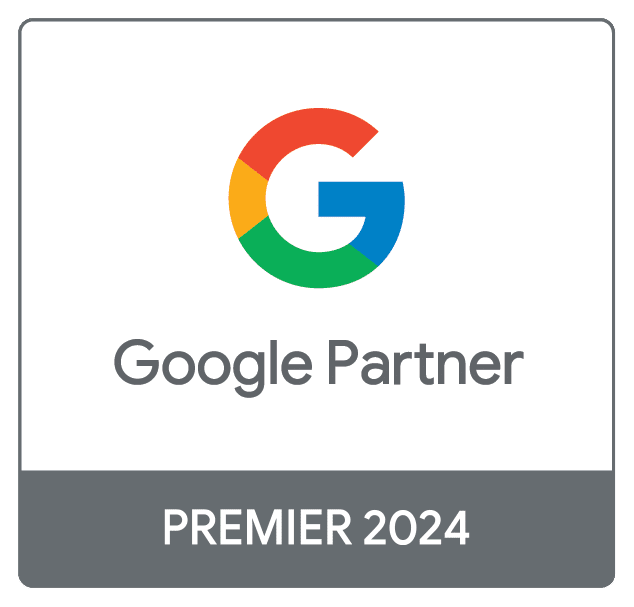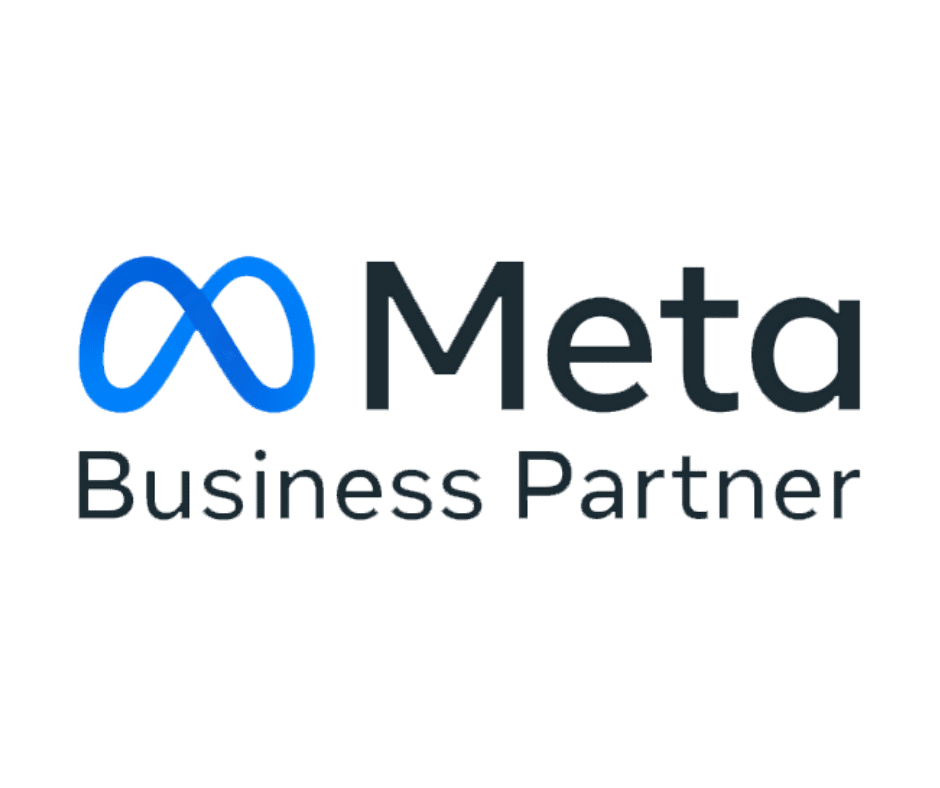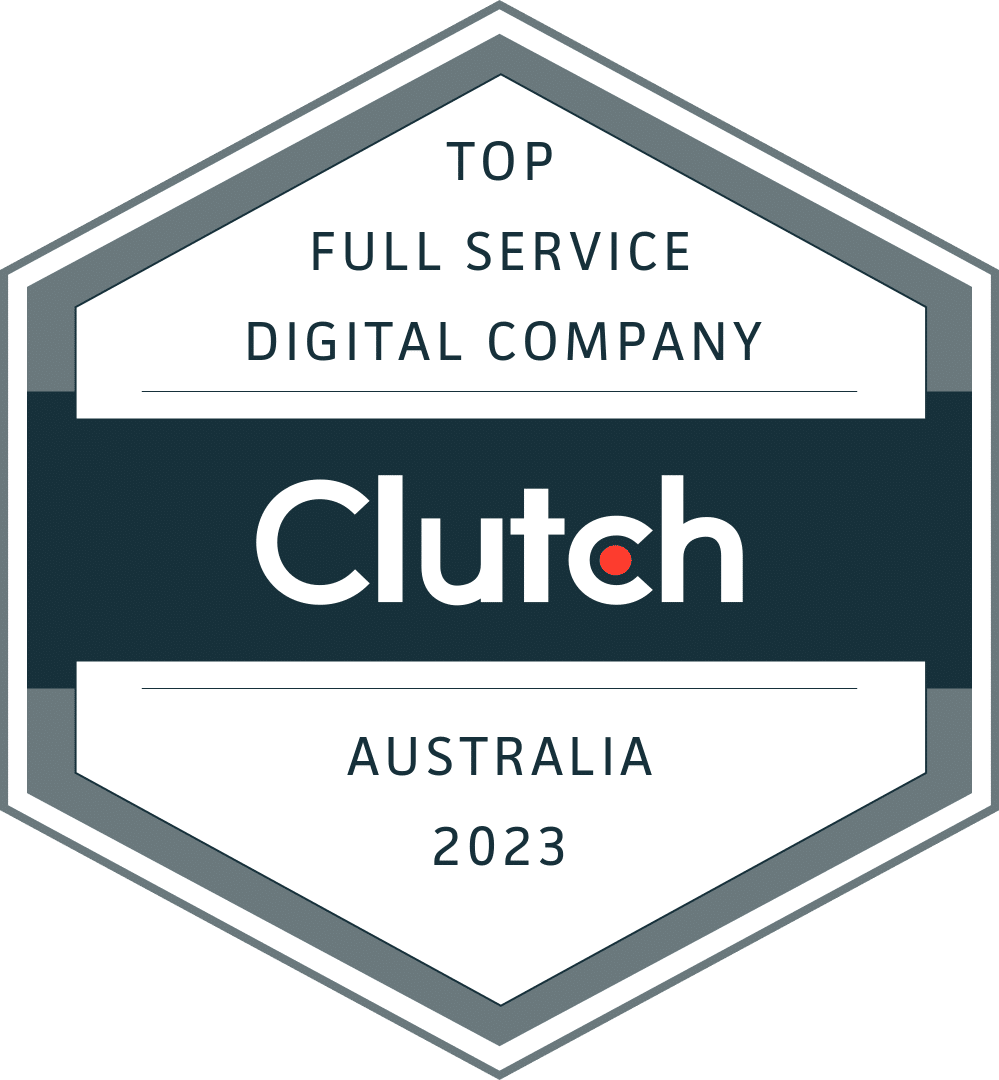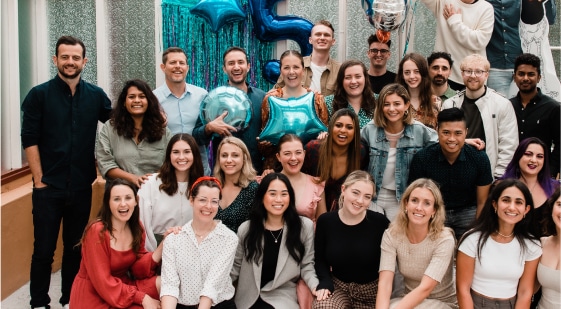Marketing to Generation Z w. Katy Richardson
Episode Description:
Katy Richardson is the Creative Services & Marketing Director at UNiDAYS, a website giving university students and graduates discounted deals on products and services. She shares how to best market to Gen Z consumers, and most importantly, what doesn’t work.
Key Takeaways:
- The first social generation that has grown up as digital natives.
- What are the platforms Gen Z is using?
- What are the best ways to reach Gen Z users?
- What doesn’t work when marketing to Gen Z?
- Why do you need to have Gen Z represented in your team?
- A discussion around attention spans vs filtering content.
- Benefits in providing discounts for your products and services.
Featuring:

Katy Richardson
About the Guest:
Katy is the Creative Services & Marketing Director at UNiDAYS, ANZ. She’s a go-to on the next gen’s habits and attitudes whilst creating conversation on the role brands can play in empowering young people. You can follow her on LinkedIn.
Podcast Summary: Tips For Marketing to Generation Z
Katy Richardson, Creative Services and Marketing Director at UNiDAYS shares how to best market to Gen Z on the Smarter Marketer Podcast.
Generation Z are digital natives - born between 1997-2012, they are the most global and social generation yet. To effectively market to this emerging demographic, brands must take into consideration their defining habits, behaviours and interests.
If one thing is clear, we can’t treat Gen Z the exact same way we would Millennials and beyond!
Here is a guide for how your business can effectively market to Gen Z, and most importantly what you shouldn’t do.
What are the traits of Gen Z?
Gen Z are digital natives, meaning that they have grown up in the age of technology, information and social media. They rely on the internet as a source of information gathering, and are accustomed to operating in the online space.
Evidently, mobile-first is a must. Over 55% of Gen Z use their smartphones for 5+ hours per day. If you’re not optimising your emails, website, and ad campaigns for mobile devices then you’re potentially missing out on a huge segment of your market.
Secondly, functionality is vital. If your website or app is slow to load, doesn’t include the information users are actively seeking or is difficult to navigate, your audience is going to exit out and move onto the next brand. Functionality should be front of mind when crafting your brand’s digital experience.
Where do you market to Gen Z?
With a plethora of channels to promote your brand, how do you know where to put your marketing efforts? Should you only invest in social ads? How many emails should you be sending to your database?
Performance metrics are a fantastic guide as to what channels you should use and what isn’t as effective. The first step is to review what content your audience is engaging with. What times of the day does website traffic increase, and what are main channels users are coming from. This leads to purpose-led activities, where you know that certain channels will deliver certain results, rather than playing guesswork.
Additionally, it is important to find the bridge between sticking to brand guidelines and your tone of voice, but also pushing the mold to accommodate to new content types and audiences. Short form video is on the rise, especially TikTok and Instagram Reels. If there’s one thing you shouldn’t do, it’s chop up your existing YouTube Ads and TVCs and share them as short form video content - audiences are just going to skip them! Any content that isn’t purpose-led or feels unnatural for the particular platform is just a waste of time, energy and dollars.
Does Gen Z have a shorter attention span?
In short - no.
This is a misleading piece of information. It’s not that they have a short attention span… it’s that they can quickly decipher what content is interesting and what content isn’t worth their time. In fact, it takes Gen Z less than 8 seconds to make this decision.
So what does this mean for marketers?
It’s a heavily saturated market, so it’s vital to create content that stands out with a fun or creative message straight of the bat!
How can you create quality content for Instagram and TikTok?
- Get to the point quickly.You have less than 8 seconds to make your mark.
- Implement something eye catching. Use bold colours, have a clear message, or make your offer stand out.
- Short-form video really is the way forward. Stay up-to-date on TikTok and Instagram trends and consider how you can use them to promote your brand. Keep in mind that trends come and go quickly - sometimes in a matter of days. If you take too long to make your mark, you might have just missed your chance.
- Don’t try and talk like them if you’re not them. Unless you have a Gen Z writer in your team, don’t try and speak like them and hope that it will resonate. They can sniff out a phony.
- Low-fi, raw and real content works better on Reels and TikTok. Don’t worry about making it polished and heavily edited.
For brands that can’t be as flexible or are more rigid with guidelines, consider how you can use ‘the 8 second window’. What can you do with colours, boldness, and audio to make your message stand out from the crowd? But keep in mind: If brands aren’t willing to meet their audience halfway, it’s almost not worth playing in these spaces to begin with.
It is essential to have Gen Z represented on your team.
We strongly encourage you to have Gen Z members on your team - more so ifGen Z are a key audience for your brand.
They are great to help inform strategy by sharing new ideas, and reinforcing suggestions. What’s more, they are the best resource to understanding the behaviours, attitudes and interests of their own age demographic.
Plus, having conversations about strategy in real-time with employees is more beneficial and cost-effective than running months of research with focus groups and surveys.
If you’re looking for an agency that has experience in marketing to Gen Z, Rocket can help. Call us on 1300 059 620 or contact us here.
Transcript
James Lawrence: Today I'm here with Katy Richardson from UNiDAYS. Katy, welcome to the pod.
Katy Richardson: Thanks, James.
James Lawrence: Excellent to have you here. So Katy is currently Creative Services and Marketing Director, ANZ for UNiDAYS. UNiDAYS is used by roughly 35% of college and university students in the US, UK, Australia and other countries. Basically to provide a range of services to support students through higher education. Prior to UNiDAYS, Katy spent almost five years at Polite Social where she worked her way through to become client Services Manager. Polite Social works in the socially driven content creation space. And I felt that as someone with almost ten years experience, both client and agency side, working in social content and digital, marketing primarily to Gen Z, I thought Katy would be great to have on to the pod, and today we're going to be discussing how to market to Gen Z. So Katy, welcome. And I thought a good place to get started would be just for you to kind of describe UNiDAYS. What the organisation does and, and where it's headed at the moment.
Katy Richardson: Absolutely. Thanks for the intro as well. So UNiDAYS is essentially a global platform that connects brands with young people. So both students and graduates, and in essence, we just want to make life as simple for young people as possible. So whether that's saving them money, connecting them with the brands they love, introducing them to new brands, we just want to be there every step of the way to support them, from study through to graduation.
James Lawrence: So yeah, highly relevant what you're doing in your day job to this discussion, which is good. Before we jump into it, I think it's good to discuss just broadly the cohort, just to make sure we're on the same page and for the listeners as well. How do we define Gen Z? What is it?
Katy Richardson: So Gen Z; there's not an exact end date for for the generation, but I think it's roughly between 1997 and 2010 to 2012. So I think the upper end of that demographic is now around 25 and the younger 10. So when we talk about Gen Z, we look at that age range.
James Lawrence: I mean I did a bit of reading before the pod, but it's so hard when you're talking about an entire generation. Obviously there's going to be outliers and differences and whatever else. But I think sometimes the generalisations are relevant. And they do hold for a particular reason. What do you say? Like what are the general traits of that cohort who, I guess, are now between 10 and 25 years old?
Katy Richardson: So I think something that's really important to keep front of mind is the fact that these guys are through and through digital natives, so we can't treat them in the exact same way as we would millennials and beyond, because the way they've grown up around technology is completely different to those other demographics. So I think with that in mind, it's just so important that brands, and will probably touch on this later, but that brands do keep that front of mind in their digital experiences and especially usability of their site and apps and whatnot. Just keeping that really mobile first and making sure the experience is really intuitive and easy to use for these guys. That was probably the number one defining characteristic. And then the other, I guess, they're the most diverse and inclusive generation yet.
James Lawrence: It's kind of fascinating. It's based on a sample of five being my little nieces and nephew who kind of fit firmly into the demographics. I'm always the annoying uncle who's in marketing, so I kind of observe their use of technology and then try to befriend them on Snapchat and, you know, try to stay relevant. But yeah, I kind of reading through the Wikipedia articles, obviously general traits; but well behaved, risk averse, live more slowly than their predecessors were at the same age, consume alcohol less often, more concerned with academic performance and job prospects. I think this one's a really interesting one for us older people; better at delaying gratification than their counterparts from the 1960s, which I think is probably not necessarily the stereotype that older people would have about young people these days. Greater awareness and diagnosis of mental health conditions, sleep deprivation is more frequently reported. Care about sustainability, responsibility, social impact, less time reading books, more time on their phone. But I think as you touched on, the big one is just that complete digital native. It's not like other generations that kind of could remember a time before that happened. It's a generation that has grown up knowing nothing different. And yeah, roughly 20% of consumers in Australia are fitting into this demographic. So it's an important one, I guess, as it comes to to marketing and us as marketers. What do you say are the habits for Gen Z around technology and devices and applications and like where do where do we find them?
Katy Richardson: We also do a lot of research and kind of investigation into the places where they are playing so very heavily social. All the standard ones you think of. And more recently we're playing in TikTok and looking into sort of streaming services such as Twitch. Gaming is becoming a really important one. I think that's something that brands should definitely take on board in terms of that whole cohort. That's a massive opportunity there, so I'm not too familiar with it myself. I know that BeReal is now a platform that Gen-Z are using, and yeah, other services like Discord as well.
James Lawrence: And I don't know, maybe we're not jumping too far ahead, but like how do you make sure you're backing the right horse because it is hard. Like I think we work with a broad range of clients, and TikTok has been so big in this demographic for at least a couple of years now. We had TikTok come out and present to us at our staff meeting last week, and I think this time last year, half of TikTok users were made up of Gen Z. That's now dropped to 40%. Not because it's still not growing, but because TikTok is growing as a more mainstream platform now. But how do you stay on top of the channels that are changing so quickly versus just staying to the obvious ones; YouTube, Snapchat, TikTok and how do you make those decisions around where you're putting your activity?
Katy Richardson: Yeah, definitely. So we do keep on top of those kind of shifts and make sure we're speaking to those platforms to understand what those changes look like. We're pretty lucky in that probably half of the ANZ team over here are they do fall into the Gen-Z demographic. So that really helps because we have day to day conversations about what's new, what people are using. Just try and do as much market research as possible to understand that. And obviously performance metrics also reflect that. So if we're seeing poor performance, we will investigate and see.
James Lawrence: How useful is it to have people within the age group in terms of marketing into them, do you think?
Katy Richardson: Yeah, I was going to touch on this at some point. It is essential, like my job is made 50 times easier by the fact that half my team do fall in that demographic. They're part of the strategy. They help inform it. They are awesome at feeding into all elements. And we've got a couple in creative, a couple in commercial, a couple in marketing. So feeding discipline and then they factor in that demographic. I would strongly encourage anyone in any brand to make sure they've got Gen Z represented in the team. And if you can't, making sure you're hosting focus groups or if you've got access to any survey functionality, like we're lucky to have the council, which is our own research platform, but making sure you're actually speaking to them and asking them what they want and what they're doing and what they're using, it's absolutely essential. And it changes so much as well. So, you know, having that ongoing conversation and being able to have it in real time with colleagues, it's so much easier than, you know, running a research piece every 2 or 3 months.
James Lawrence: And how do you balance getting all that great feedback and it's almost feet on the ground kind of thing versus still maintaining, not ceding too much control over to, I presume, more junior members of the team that probably haven't also got the experience that you have and that more senior marketers in the team have. How do you kind of work together in a way that takes advantage of both of your skills and experience?
Katy Richardson: That's an interesting one because I think we have very much… I like to test a lot of things, and I don't often say no to just smaller, smaller tests. But I think if we were to identify something, it was a really specific niche that didn't have the audience behind it and didn't have any sort of stats to support it, I'd probably be more hesitant or, you know, do a little bit of activity, but I think that's a difficult one, and it definitely is a balance in bringing expertise and knowledge of the channels that do work. I'm a big fan of traditional marketing, out of home and all those are my sort of go tos as well. So I think it's just about having both feed in and then the results will, you know, prove themselves in time.
James Lawrence: I think once again, I don't want to jump ahead, but interesting to get your perspective; creative content and messaging on TikTok has to be different to the type of creative that you're taking out in other channels. And I imagine that it's a constant battle for you guys, like how how far to push it, how far to bend brand guidelines and tone of voice and whatever else. But if we're too rigid as marketers and we're sticking to things that were signed off two years ago, we're probably missing the boat in terms of actually reaching our audience. So, like the interesting observations there, is that true? Do you find that to be the same on more traditional platforms like YouTube, Snapchat, like, what's the difference? How does it all meld together?
Katy Richardson: So we actually take a very different approach to TikTok than we do other channels where we would do our standard sort of advertising that we know works for conversion and just brand building in general. We're lucky at UNiDAYS because it is quite a fun young brand. So the way we can flex tone of voice and brand guidelines as such, we do have a bit more leniency there than potentially some other some other brands. But the way we play in TikTok is way more like user generated content and harnessing that, using creators and influencers that back UNiDAYS and actually understand what we do and want to work for us because I feel like it can come across very contrived. If you know a brand has user generated content or influencers, and there's a brief that is really restricted the way in which that creator is delivering the message… I like to think we do quite a good job of working with people that are experts on that platform, and I think it feels just a lot more native, doesn't it, to have TikTokers deliver content in that space? You know, people don't. They're on there for entertainment they don't want to be sold to.
James Lawrence: Yeah, that's it.
Katy Richardson: At least you've got to deliver it in a way that feels at home in that platform.
James Lawrence: That's it. And we were talking about it before we jumped onto the side of recording that Gen Z, because they are digital natives, they've almost got this incredible almost filter, in terms of authenticity around when a brand is actually meeting them at their level versus just advertising to them. I think for us, clients that are more rigid aren't willing to kind of change and tweak and be relevant to the platform, it's almost not worth engaging rather than engaging in kind of a disingenuous way in terms of TikTok. So in terms of like Snapchat, YouTube, what observations there, I guess around Gen Z behaviors, how they differ from the other cohorts that we speak of in marketing?
Katy Richardson: YouTube is becoming more important for us because in general kind of short form, they've also got YouTube shorts and stuff now that we're yet to explore. But any sort of video content specifically short form, is becoming increasingly important. That along with Twitch, are kind of developing areas at the moment.
James Lawrence: Yeah. And I guess for the people who are less familiar with Twitch, what is it? How as a brand, how do we engage organically/paid? What's the recipe for kind of making it work?
Katy Richardson: We're probably still working through the recipe at the moment to be honest. But Twitch is a streaming service. When I traditionally would have thought of like gaming, you know, you think of everyone else. But my perception of gaming used to be very different to what it is now. I think we find that 55% of our people that engage with our content on Twitch are female, for example. And I think Twitch is an example of how mainstream gaming and kind of streaming services have become now. It spans gamers, kind of influencers in that space that do live feeds, DJs, there's all sorts on there. So it's a really exciting space. I again would recommend it for things like the non skippable ads on Twitch. I think we see a 90% video completion rate which is above the benchmark. I think the benchmark’s like 75-80%. Like it's a really diverse cohort. I think about over 40% fall into the 18-25 demographic, which is heavily who we speak to. We probably only launched the Twitch strategy in June or July, so we're really finding our feet with it. But the results we are seeing are really strong. Again, those non skippable, really short form targeted ads that we're currently using for brand awareness that really well for us at the moment.
James Lawrence: How do you allocate a certain percentage for testing? I guess in terms of your overall spend or it's more just if someone brings a good idea, you're happy to kind of run a pilot or like, is it what's the approach you take?
Katy Richardson: Yeah. Good question. It depends on what we see is the value from that. So Twitch was on our radar for a long time. And then as we assess budgets and move things around, I wouldn't say we allocate a specific percentage. But if we can downvote something that's not working and then some budgets freeze up, well, that's the first channel we look at. What have we been thinking about?
James Lawrence: I found quite interesting in preparing for the pod; I think it's been bandied about and it was kind of all around lack of attention span around Gen Z and younger people. I think it was misquoted at the time or was basically saying that it's a filter essentially, where Gen Z, they've done these studies and it takes eight seconds for them to filter content and just go, yeah, I'm interested or no, I'm not. And for millennials, it takes 12 seconds. And I think at the time it was kind of, Gen Z have no attention span, which isn't necessarily what the study was showing, but it was more just about it doesn't take very long for them to go; yeah, interested or not interested. And so I think that kind of parlays into how to create content and what content kind of works and what doesn't. So just kind of curious, what types of content you need to get into market and or what's worked historically? Any kind of tips and tricks for listeners.
Katy Richardson: So it's a conversation we have regularly actually within the team, again, especially with the Gen Z guys, like understanding what works, what's going to capture their attention. And it may seem like an obvious one, but having stand out creative with a fun or engaging message straight off the bat, straight in there, you know, it's a very heavily content saturated market as we all know, so it is extremely difficult to cut through. But yeah, the consensus seems to be bold, eye catching and interesting creative and messaging. On the messaging front, I would say unless you've got a Gen Z writer, don't try and speak Gen Z to them. It does feel, as we said, very inauthentic. So I also do stand by, if you're selling to these guys, own it. They know what you're trying to do. They see through it pretty quickly. So take that approach and be bold with it.I think short form video really is the way forward and we see great results from it. Get to the point quickly, do something eye catching and speak to them in a way that is on their level. Or if you can't do that and speak in that way, just deliver the message you want to get across.
James Lawrence: Don't fake it. Yeah, and I think from our experience, what we see is the last thing you want to do is take video content that you've created for a different platform or for different audience, and just chuck it into TikTok or whatever it might be. It just doesn't work. Like start with, who are the people we're trying to move? What are we trying to achieve? Where is it going to be served? And then create the content from that perspective. And in all the reading I did leading up to this pod, there is just this feeling that, obviously to generalise, the cohort, the digital natives, they can smell a phony. They know when they're being sold to don't and like music to my ears in terms of what you just said, don't try to talk like them if you aren't them. Like either you do it properly, but just be yourself. There's also this kind of idea that brands, particularly kind of the movement coming out of the states, is that brands now do have to stand for something, and if you stand for nothing, you know, stand for nothing. And the idea is if you make it as a brand, if you make a mistake, apologise. It's a very different perspective to probably, you know, how it was 30 years ago and spinning stuff and PR and moving messaging around. Tthings move so quickly. Let's jump on to it. Be real, be authentic on your mistakes. And, you know, be true to who you are.
Katy Richardson: And I was going to add one more point to that as well. I mean spot on. I think they have a very high filter. As you said, if you make a mistake own it and apologise publicly because yeah, it will always surface and someone always find it somewhere online. So the other kind of hint or tip I was going to give was don't worry. On platforms like TikTok, brands don't need to worry so much about polished content. Having that low fi, unpolished and raw and real content just work much better. So it's not about high value production and things like that. Like brands can film things very easily in house and just off phones and whatnot or just the staff or however they want to do it. And it resonates really well because it's real and it's human. I think that's what people want to see on those kind of platforms.
James Lawrence: Do you have any feedback? Because I couldn't agree with you more on that one. With UNiDAYS, I know that you guys are happy to push the bounds a bit, so it's probably a bit easier, like maybe from your previous role. Advice for listeners who are in organisations that maybe don't have that mentality of being willing to push it a little bit, like how do you get by-in and to get the approval to put stuff out there that's a bit edgier, or just shoot something on an iPhone and put some basic production values around it and get it into market, rather than thinking you're pumping out a seven figure TVC, how do you get that through sometimes?
Katy Richardson: I think to be honest, a lot of the brands we do work with are willing to flex. Once they understand how things work, they’re way more receptive to that and do flex, because a lot of the brands we do work with are very youth skewed, so they're happy to work in that way. But I'd say brands that probably can't be as flexible now are a bit more rigid. Hmmm, that's a really good question.
James Lawrence: It's really hard, isn't it? Because to get results, you need to get stuff into market and you don't need massive budgets. But then I appreciate that it's not that easy in some environments to get stuff through.
Katy Richardson: Yeah, I'd say maybe then if you can't flex too much, using that eight second window as such and creating something short form. What can you do with the colors and the boldness and the messaging and making sure the frames are changing every couple of seconds to get attention and then, hope that your offer or your what you stand for is compelling enough to get attention and to convert if that's what you're trying to do. But it's a difficult one because I do think with some of those platforms like TikTok, if brands aren't willing to meet the audience halfway, I want to say it's not worth playing in those spaces.
James Lawrence: But it's almost not. Isn't it? Like if we take on board everything we've said about the generation and authenticity and don't be sold to. And then you just chop up your old TV ad and stick it in TikTok, you're going to get laughed out of town, right? I think it would be good to talk platforms in terms of, the numbers jump around a little bit, but I'd be really keen to hear how this compares to what you see. Because you're on the other side of it, getting results coming through. But it feels that YouTube, Snapchat, Instagram, TikTok are the bigger platforms or the generation skews heavier there. TikTok, the data shared with us last week was that people are spending 110 minutes per day there on average, which is just insane. Where YouTube is about 67 minutes per day, each has about seven minutes per session. Snapchat and Instagram still pretty strong in the demographic, although probably a little bit less strong than it is in for slightly older users. And then there is this kind of feeling, I guess, that Facebook has now become the platform of mums and dads and grandparents, but I think it's actually probably backed up in terms of the usage data that we see are very heavily skewed towards video. Is that kind of what you see from where you're putting your efforts, where you're putting your budgets, where you're putting your kind of content efforts, is that roughly the right mix?
Katy Richardson: Yeah, yeah, I'd agree with that. That being said, maybe surprisingly we still see quite good performance from the likes of Facebook ads and things like that. We’re pushing those strong partnerships and brands that we know that Gen Z love. We do still see relatively good conversion and new traffic from that platform. But yeah, in terms of that weighting, I'd say that's that's a fair reflection of our sort of spend attention.
James Lawrence: Then Google probably pretty similar behavioral traits to most demographics, right? In terms of just being search driven rather than kind of social driven.
Katy Richardson: Yeah, yeah.
James Lawrence: How does it work with UNiDAYS being an app? A large part of it is kind of like driving app downloads and engagement with the app. Like, I guess, observations around what's worked to try to get users to download the app. Maybe that's different to other campaigns that you've run.
Katy Richardson: That's actually becoming a massive focus. I mean, we've been pushing out downloads for a while, but it's becoming increasingly important for us. Some of the functionalities that we do have within the windows platform, they're only available on the app. So some of the campaigns will call that out. For example, we do a lot of like giveaways and competitions because we work with loads of awesome brands that are willing to run those with us or just within the marketing department. We'll push those out. But the giveaway functionality of UNiDAYS is actually only available in the app. So sometimes if we're pushing those giveaways across different channels, when they follow that user journey, unless they have the app, they'll be redirected to get it through the mobile site, for example. Then if they're on desktop, we have tiles where there's the QR, the classic QR code.
James Lawrence: Love it. People now know what it is.
Katy Richardson: Exactly. So yeah, we'll have that on desktop sites and stuff and easily scannable and our digital out-of-home that all calls out the app download that's the main CTA can follow. And then that takes them to the App Store. So I'd say we feature heavily on most of our brand assets actually.
James Lawrence: This conversation has been very heavily focused on on digital. How does offline work for you guys?
Katy Richardson: We've kind of built that into our always on strategy. And we have a lot of digital at home because obviously we're predominantly looking at students and talking to them. So a lot of stuff on campus and then also venues. So more the bars and things in close proximity to universities as well as some street furniture as well. With QR codes, some of them so they're trackable, but a lot of them are just there, especially the digital stuff. It's awesome for changing creative messaging quickly, easily. So if we've got a sale moment or we're running one of these big giveaways, at the moment we've got a big competition called pimp my pad, which is like win $5,000 worth of bedroom makeover. Essentially, we'll use that just to push initiatives like that, but I'm a huge advocate for it. I feel like especially when we're still working on the market over here, we're not as established as we are in the UK, which is where we were founded. I think it's a really important part of the marketing mix and especially now everyone's, I don't want to talk Covid, but now everyone's back in real life shopping and real life back on campus going about their daily business. It's never been more important, I think, for brands there as well.
James Lawrence: But I think it's real, isn't it? Like it's from March 2020 onwards, there was this flight to digital and obviously it made sense because people are on devices in their homes and not going out as much. But the reality is, things have opened up and are opening up and you kind of want to be where people are. And you guys have the advantage of having that very kind of obvious geographical area where you can focus your out-of-home efforts. Being around universities and education centres. In terms of things that don't work, like observations around the types of approaches to marketing that just don't work for Gen Z?
Katy Richardson: Good question. I think as we kind of touched on earlier, anything that feels slightly off or contrived or inauthentic or even in terms of partnerships, if you're trying to merge things together that don't quite fit or no, it's not purpose led and there's nothing behind it. I think if there's lack of substance and purpose, that's really palpable for Gen Z. So I don't think that kind of stuff works. I see straight through that. And it's probably not even just that demographic. I think everyone really has a very ‘we're more in tune with that kind of stuff now’, and I think people expect brands to be real and communicate in a two way conversation with their customers. I think that's a really important one. Not to feel insincere, I guess, or contrived.
James Lawrence: I think I do feel there is this almost patronising view down at the generation, if that makes sense. I think it is almost, they'll just take it and it's like, well, no, actually they're savvy as all hell, but they're just they’re probably doing it in a slightly different way to the way that people who are now in their 40s and 50s would have done it. I do feel that there is almost this sometimes, once again, generalisation, but maybe a complete misconception around what's being appraised and what's not. And I think your insight into don't don't try to speak Gen Z speak. If you're if you don't know how to speak it, don't do it. I think having people that are closer to the demographic and get it is probably an interesting way of trying to bridge the gap there. Do you have any challenges or opportunities? What are some opportunities that marketers might not have thought about in terms of marketing to this cohort that from your experience, are things that people could consider?
Katy Richardson: I think that it's really important to provide value. So in terms of obviously talking about our space, having a really strong discount strategy. So I think rather than having a big sale moment and then returning to full price, for example, if there's any sort of an opportunity to provide value to this cohort. Sspecifically, obviously with UNiDAYS, it's students or graduates that's a bit younger in general, if there's any way of just having that as an always on, some of the highest performing brands we see with UNiDAYS are those that just offer the standard. It's not a huge percent off, but it's consistent and they know where to go for it. And they're always the top performers because they build that trust and kind of brand loyalty with their audience.
James Lawrence: So just that kind of ongoing 5-10% discount to students. You're not kind of going out with campaigns around seasonal campaigns around discounting or Christmas and other Black Friday type stuff, or?
Katy Richardson: I mean, you can, but just what's going to set you apart? So can you provide early access to Gen Z for those sale moments when you are pushing them? Stackable offers. So they're not just getting the sale moment. Everyone else is. They're getting that extra 5-10% off on top of that. Building hype around those moments. There's heaps of different strategies. I think a consideration, especially in the current economic climate would go a long way. And especially the idea of, with where we're talking to students and grads in a gated community, where can you provide something exclusive like an exclusive offer that that works really, really well and helps? Again, I say build that trust and affinity with brands.
James Lawrence: Yeah. And I think that's some interesting ideas that are around like not even having to come at the expense of margin. Like just coming at it from exclusivity or early access or always on or whatever it might be. Katy, that's been excellent. I do feel if you're a listener to the Pod and marketing into this cohort is important, definitely some good considerations, right? I think first of all, around just general traits then around kind of activity, where are we hanging out? Where are we spending our time. And then also then how to actually move people? What's the type? What are the rights and wrongs around the things that will engage versus the things that will deter? I always ask this one question of people on the pod of guests. What's the one piece of marketing advice you'd give to an in-house market wanting to succeed?
Katy Richardson: So in line with our conversation, I think we've already touched on it. But having a Gen Z or a young person in the room for every decision, I think that demographic is only going to become more and more important. So having that representation and if you haven't got someone on the team, as I say, holding a focus group, interacting with them in real life, I think it's invaluable. You'll learn so much from them. So that would be my advice.
James Lawrence: It's great advice. Love it. Katy, thanks so much for coming on to the pod.
Katy Richardson: Thank you. It's been a pleasure.










